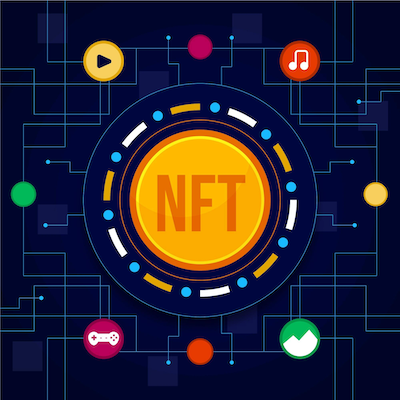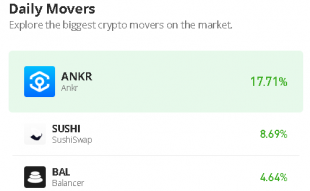Join Our Telegram channel to stay up to date on breaking news coverage
You can turn your digital art into NFTs using a computer and a set of creative abilities.
What are NFTs?
Tokens using NFTs are non-fungible. In economics, the term “nonfungible” is frequently used to describe qualities like uniqueness and non-transferability. Nonfungibility in the cryptosphere simply means that something cannot be traded for another.
A “token” is essentially a certificate of validity maintained on the decentralized blockchain, which makes digital assets traceable and available to everyone. Tokens are used as units of account. As a result, NFTs are a special kind of virtual currency that can be used for pretty much anything and typically takes the form of creative digital productions like paintings, films, music, collectibles for video games, and more.
Everyone in the globe is now purchasing and selling NFTs due to their recent rise in early 2021. But how does one turn actual art into NFTs and how does one market them? Is it challenging? Is coding required to produce an NFT?
In a nutshell, the steps are really straightforward. Read the concise tutorial below to get an understanding of the primary method and its nuances.
What is a crypto artist?
Since art is the most frequent application for NFTs, it is not surprising that interest in cryptographic art in the form of NFTs has recently skyrocketed. Numerous creative people were drawn to blockchain technology because it has made it possible for artists to earn tens of millions of dollars from their digital paintings, something they previously could only dream of.
Public interest in sensational high-profile auctions of NFTs associated with digital art has been significant. The priciest sales made headlines because they brought in millions. The most costly NFT in 2022 cost $91.8 million and was created by an anonymous digital artist. Pak.
Everydays: the First 5000 Days NFT collection by Beeple artist Mike Winkelmann was sold for $69.3 million in a highly pricey auction in 2021. Unique works of art produced by well-known artists and sold at auctions on marketplaces like well-known NFT platforms as well as conventional auction houses like Sotheby’s and Christie’s are considered to be examples of crypto art. However, the majority of the skilled amateurs who work in the crypto sector are unknown.
However, some NFT collections, such as the groundbreaking Bored Ape Yacht Club or the newly most popular CryptoPunks, are examples of generative art. Usually, a variety of autonomous systems are used to produce this kind of art. The pictures in these well-liked collections were assembled by mixing and matching a variety of basic picture elements.
How can you make your artwork into an NFT?
The natural response is “yeah, why not try” if you are already debating whether you should convert your art into an NFT. An NFT is made using a simple, affordable, and non-technical procedure. All you need is a computer and a set of creative abilities.
Remember that NFTs may also be able to convert songs, films, GIFs, and other digital files in addition to photos. Therefore, you must first decide which area of art best suits you. You will know what skills you will need to develop in order to become a true NFT maker based on this.
For instance, using graphic editing tools like Adobe Illustrator, Adobe Photoshop, MS Paint, CorelDraw, and similar ones is a requirement for graphic artists. Alternate approaches, such as three-dimensional (3D) modeling, which is known to be more challenging for novices, are also an option. If you select 3D animation, you will be required to create animated visuals and characters that will later be turned into NFTs using 3D modeling software like Blender or Cinema 4D.
After that, you must develop a distinctive concept for either a single piece of art or perhaps an entire collection, as well as consider the future subject matter.
Does coding apply to NFTs?
Without coding, it is quite simple to produce an NFT from digital art. It is known as minting to produce them. In essence, it is the process of posting a special instance of the token on the blockchain. NFTs are manufactured and then minted, just as how metal coins are made and then put into circulation.
After going through this process, the particular work of digital art becomes safe, impenetrable, and challenging to manipulate. This digital thing can now be purchased, sold, and digitally monitored when it is resold or collected because it has become an NFT.
The innovative strategy for artists to fairly monetize their work is to mint NFTs into digital art. Artists can incorporate a royalty clause upon minting on the majority of NFT markets to get passive money from secondary sales of their artwork. The artists may profit if the artwork is in higher demand, gets well-known, and appreciates in value. The majority of NFT marketplaces offer automated minting. You will need to start it by following the few easy steps listed below:
However, if you already have skills in this field and wish to work as an NFT developer, you can try to code an NFT yourself. You must keep in mind that the Ethereum network still controls the creation of NFTs before delving deeper into NFT programming.
Solidity, a coding language created for creating smart contracts that operate on the Ethereum blockchain, is typically used for NFT development. HTML/CSS and Javascript are additional. Additionally, NFTs created by artists are typically stored using the InterPlanetary File System.
Choosing to create and sell your NFTs on the NFT marketplace
The process of minting NFTs requires selecting an appropriate NFT platform, which is a crucial step. The best option will depend on a number of variables, including the supported file format, compatibility with crypto wallets, user accessibility, and the cost to mint an NFT, or transaction fee, which is a payment made to cover the cost of the computing power needed to process and validate transactions.
In the cryptocurrency industry, there are numerous different online NFT marketplaces, and each of them runs a little bit differently. Knowing if a platform is self-service or curated is essential for artists in order to select the one that is most appropriate, popular, and user-friendly for them. All artists have free access to self-service or uncurated NFT platforms.
You only need to register using a crypto wallet and pay the transaction cost to mint an NFT in order to upload NFTs onto them. The most well-liked NFT marketplaces for mass self-service are OpenSea and Rarible. Curated NFT platforms have stricter artist selection criteria. You will need to submit an application with all the information about the NFT collection and your prior artistic skills in order to register and begin minting your art on these platforms.
The extended time it takes for the experts to make a choice is another obvious drawback of curated NFT marketplaces. But because of the strict selection standards, only the best digital artworks are displayed on these platforms, giving consumers more faith in the artists who work with these platforms. Among the well-known curation systems are SuperRare and Nifty Gateway.
How to create a cryptocurrency wallet
You will require a cryptocurrency wallet in order to log into NFT platforms, sign transactions, and control your balances. The most crucial step before configuring it is to confirm that the wallet supports the cryptocurrency that will be utilized on the NFT network you wish to use. Since the majority of NFT marketplaces are built on Ethereum, payments can be made using Ether, Ethereum’s native coin. Consequently, it is essential to have a cryptocurrency wallet and some ETH on hand.
Numerous crypto wallets have millions of users already. For simple access to blockchain-based platforms, many of them have a variety of functionalities, and some of them even have their own mobile applications and browser extensions.
What level of security you are willing to have will determine the best bitcoin wallet to use. The three basic categories of them are hardware, custodial, and noncustodial wallets. Since user funds are automatically stored in a custodial wallet by a third party, much like how banks maintain the funds in checking and savings accounts, it is also known as a hosted wallet.
It is regarded as the most user-friendly and straightforward to set up. Unreliant on a third party, a noncustodial wallet allows consumers total control over the security of their cryptocurrency. An actual physical device called a hardware wallet, commonly referred to as a cold wallet, may store users’ cryptocurrency offline and secure it even in the worst-case event of a computer hack.
How to market digital artwork with NFTs
Your NFT minting will probably come to a stop with an NFT sell. The majority of NFT platforms offer the opportunity to specify a price for your NFT while minting it or to select a selling mechanism.
The two primary methods for selling NFTs at the moment are fixed price sales and auctions. The simplest method is thought to be a fixed-price sale because it is quite straightforward and direct. You will simply need to provide the selling price in order to sell your newly created NFT in this manner. Pay attention to how much you will receive in the event that your art is sold in the future as certain platforms also need you to establish a royalty percentage.
The ability for purchasers to browse and place bids on your digital art is another approach to market your NFT. Some auctions might simply take place online, while others might culminate in a formal live auction.
They often come in two different varieties. The first kind is an English auction, which is a price-increasing auction where the highest bidder ultimately prevails. A timed auction is a particular kind of English auction in which an NFT is up for bid for a predetermined length of time, with the highest bidder winning at the conclusion. A Dutch auction is the second kind; it is a decreasing-price auction in which the price declines until your NFT is purchased.
Which method you use to sell NFT is entirely up to you. Each approach has advantages and disadvantages, whether it’s the potential for underestimating the true value of your artwork when setting a fixed price or the reliance on timing during auction sales.
Related
- Best NFTs to Buy and How to Buy NFTs
- Best NFT Projects to Follow
- Top 8 Coolest NFT Projects – Cool Art and Cool Utility
Join Our Telegram channel to stay up to date on breaking news coverage


